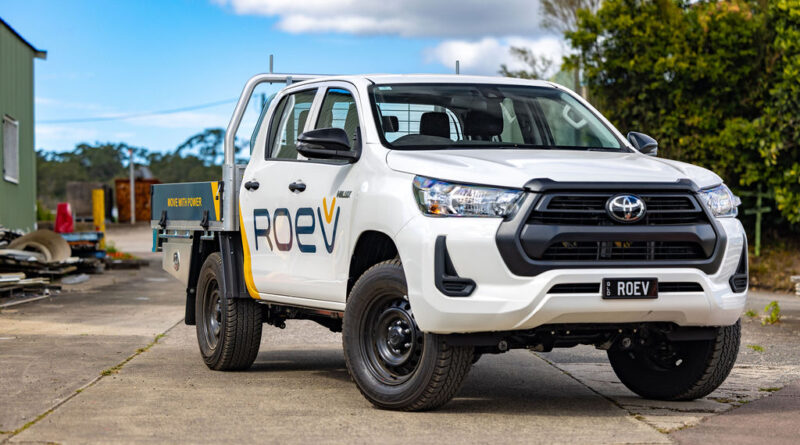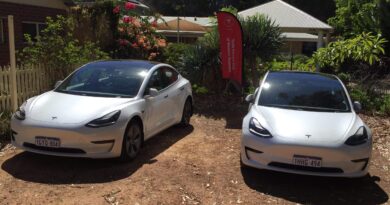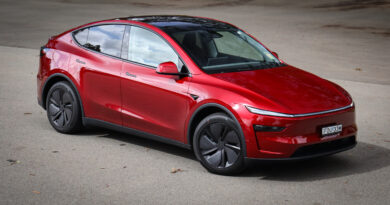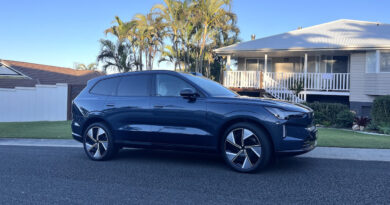Roev’s electric ute plans explained: Conversions now, manufacturing its own vehicle by 2026
There’s another new EV brand set to launch in Australia in 2023: Roev.
But the newcomer is a lot more than just another electric car brand. It plans to revive car manufacturing in Australia.
Roev, which stands for renewable optimised electric vehicles, has detailed plans to build electric utes, initially starting with Toyota Hiluxes and Ford Rangers converted to electric and eventually branching out to a ute designed and engineered in Australia.
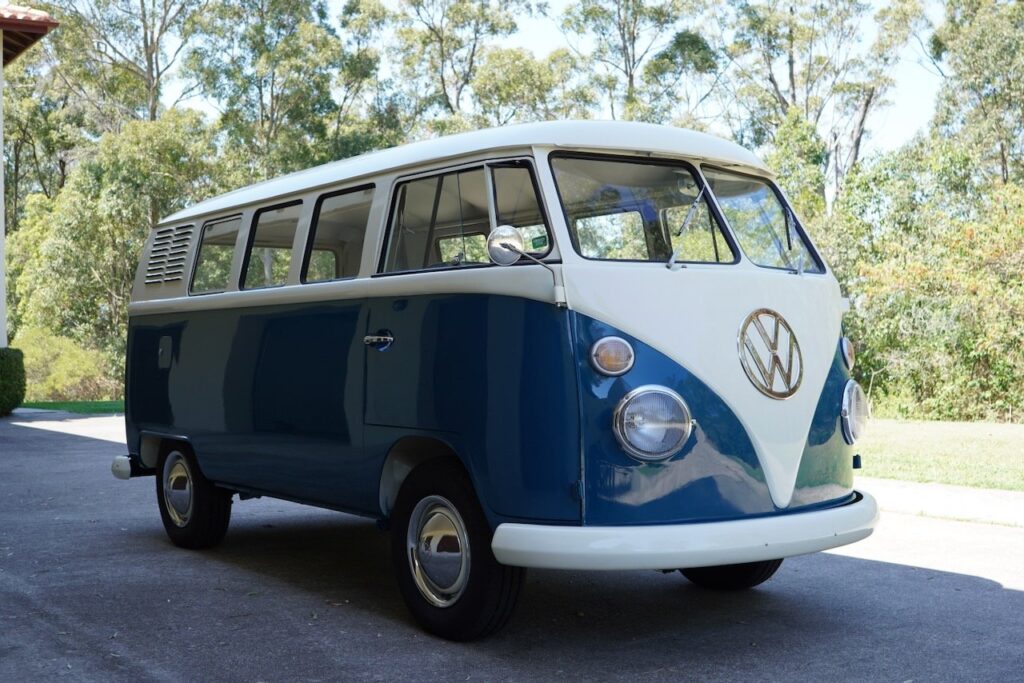
What is Roev?
Roev (pronounced “rove”) is a new brand that was created by two former Atlassian execs.
The software giant co-founded by Mike Cannon-Brookes – a billionaire climate crusader – provides a perfect springboard for Roev, which is focusing as much on manufacturing techniques and software as it is the electric drive systems of its planned cars.
Read more: EV ute overload: The electric pick-up trucks coming soon
“We have the passion, vision and know-how to restore manufacturing in Australia” says Roev CEO and co-founder, Noah Wasmer.
To read the latest on Roev’s progress go here.
Already the company has been working on EV conversions of iconic vehicles, including the army-issue Land Rover Perentie and the Volkswagen Kombi.
Plus, Roev has created a running prototype of a Toyota Hilux that has been converted to electric.
The plan is to sell that Hilux EV from 2023.
The plan is to convert a relatively modest 1000 vehicles in the first 12 months of operation; to put that in perspective, that’s almost one week’s worth of regular Hilux sales in Australia.
The scaled EV conversion part of the business is a crucial first step as the company looks to ramp up head of manufacturing a bespoke electric ute within a few years.
The company is intending to create a so-called micro factory (possibly more than one) that would require much smaller capital investments to open the doors and be profitable churning out as few as 10,000 vehicles annually (most factories need to manufacture hundreds of thousands to be competitive globally).
“We’ve already invested heavily in understanding the long-term business case for manufacturing at scale in Australia,” says Wasmer. “We have a once-in-a-lifetime opportunity to make this happen and drive real change in this country.”
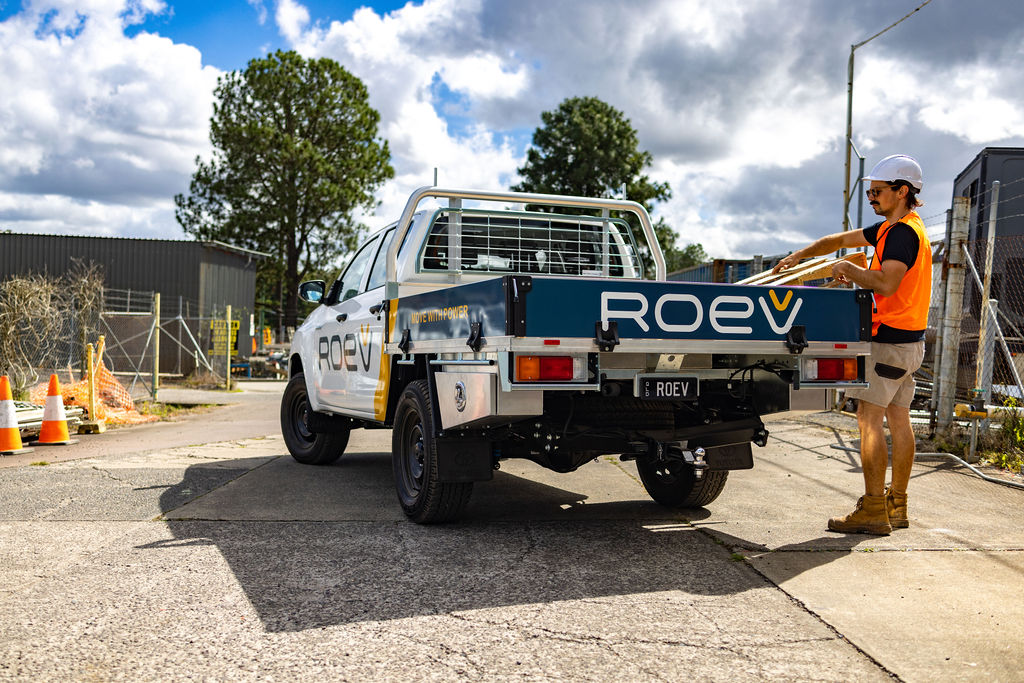
Will the Roev EV ute be capable?
It will be market demand that determines what versions of the electric Hilux the newly-formed Roev team will manufacture from 2023.
But the company says it plans to offer both two- and four-wheel drive models, the latter with proper off-road capability that Toyota Hiluxes are known for.
The Roev ute will use the existing drive shafts and transfer case of the diesel-powered ute, ensuring dual-range driving capability and relative ease of EV conversion.
A modular design seems key to achieving the scale the company is planning for.
“We believe if we design the battery boxes and some of the drivetrain correctly that it will be able to work within many vehicles,” says Wasmer.
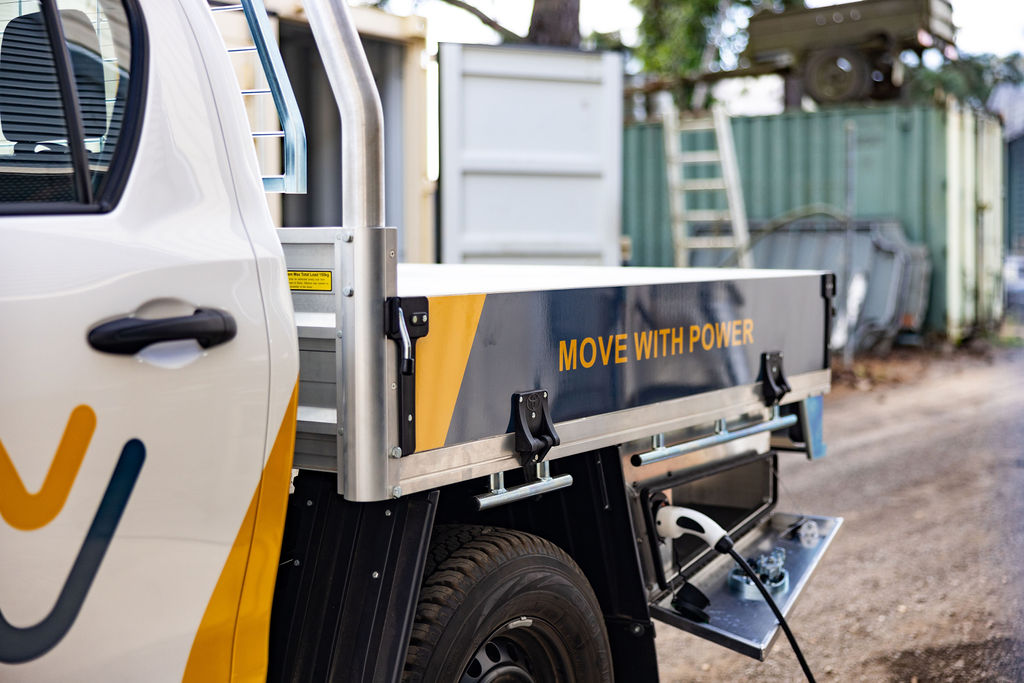
LFP batteries for the Roev ute
Roev also plans to use lithium-iron phosphate (LFP) batteries, similar to those used in Rear-Wheel Drive versions of the Tesla Model 3 and Tesla Model Y.
Without nickel and cobalt – two of the more expensive materials in many lithium-ion batteries – the batteries in the Roev EVs should be cheaper to manufacture.
The planned battery capacity is at least 100kWh (most EVs have between 60 and 90kWh of useable battery capacity), something that should ensure an electric range of at least 400km – and possibly around 500km.
Ultimately Roev wants to provide the demand that would encourage local manufacturing of batteries.
“We believe if we design the battery boxes and some of the drivetrain correctly that it will be able to work within many vehicles,” says Wasmer.
“The long-term idea is that we can source battery cells directly from Australia,” he says. “We have those minerals … we could have the lowest footprint battery in the world.”
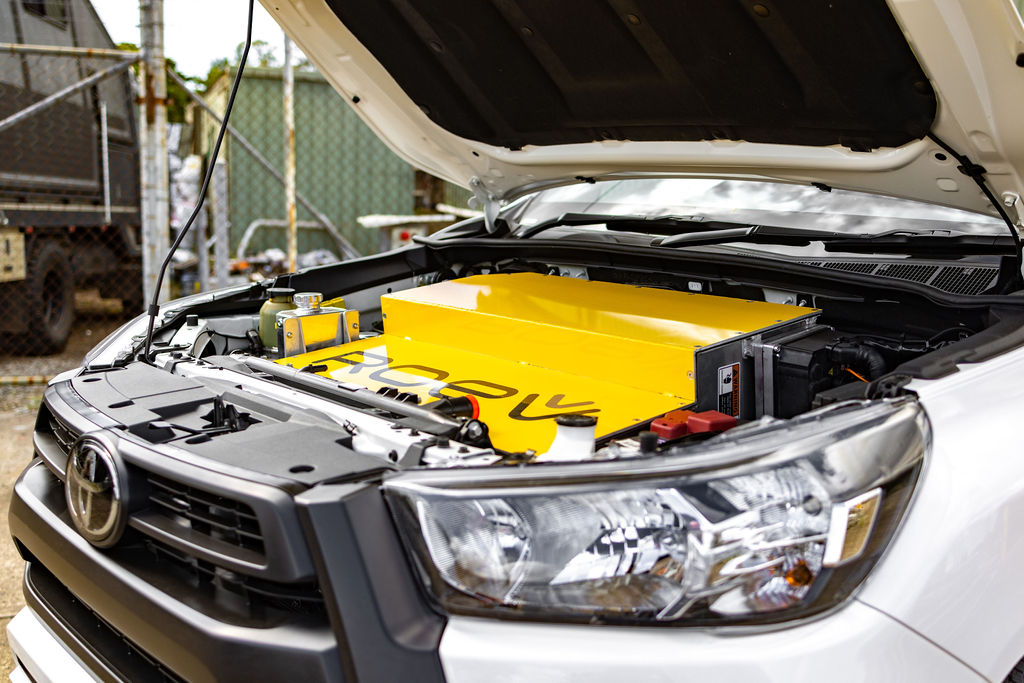
How much will Roev electric utes cost?
No word yet on how much the EV converted Hiluxes will cost, but they’re set to cost plenty more than a regular Hilux – possibly around double the price.
We suggested a quality EV conversion typically costs around $40,000 to $50,000.
Wasmer conceded “You’re roughly in the ballpark of where we would love to be” with those initial cars.
By the time the price of the donor vehicle is taken into account it suggests an overall price close to $100K.
Little wonder Roev is targeting fleets and governments.
They’re often the ones with bigger budgets and driving longer distances annually – something that reduces the payback time due to lower running costs.
Indeed, it’s total cost of ownership (or TCO) that is a big part of the sales pitch for the Roev EVs.
“When you look at the total cost of ownership of fuel and maintenance … we’re trying to get our price-points as low as possible to be a small fraction above that [of diesel-powered utes]. We don’t think we can get below that.”
There’s also the very real appeal of zero emissions motoring. Companies and fleets are falling over themselves trying to reduce their carbon footprints.
“We want to make this one of the most competitively priced vehicles in the market and we think we can do that very, very quickly,” says Wasmer.
Part of that will be the after-sale backup, which is planned to include replacement vehicles on-site to ensure minimal downtime.
Roev also plans to be more flexible than traditional car makers, potentially tailoring its EV utes to specific applications.
“Things like a reduction gear we think will be significantly different for mining [applications] than it would be for a police fleet that needs a higher top-end [speed],” says Wasmer, who also wants to see electric utes playing a role in surf life saving – where the ability of an EV to provide power for external devices could be handy.
“I have this vision … the life-saving truck pulling up to the lifeguard tower and do energy-out to power up the station.”
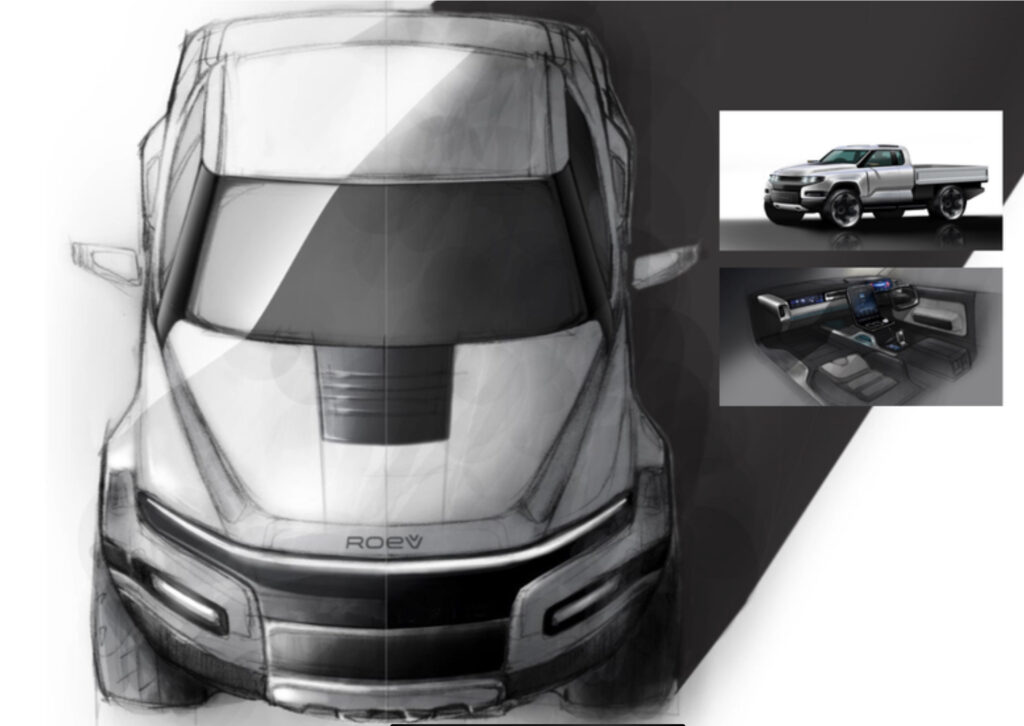
Another Aussie ute in the planning from Roev
As well as EV conversions Roev plans to build its own ute.
The company has already shown some early design sketches of a ute that’s brimming with muscle but also looks as though it has the requisite tech to keep punters content.
While Roev will no doubt leverage learnings from its planned EV conversion business, its own branded ute will clearly be a very different vehicle.
There’s still lots of work that needs to be done, including opening a factory (which is planned to be near Queesland’s Sunshine Coast) and finalising the design and engineering.
But if all goes according to plan Roev says it should have the all-new electric ute on the market around 2026.
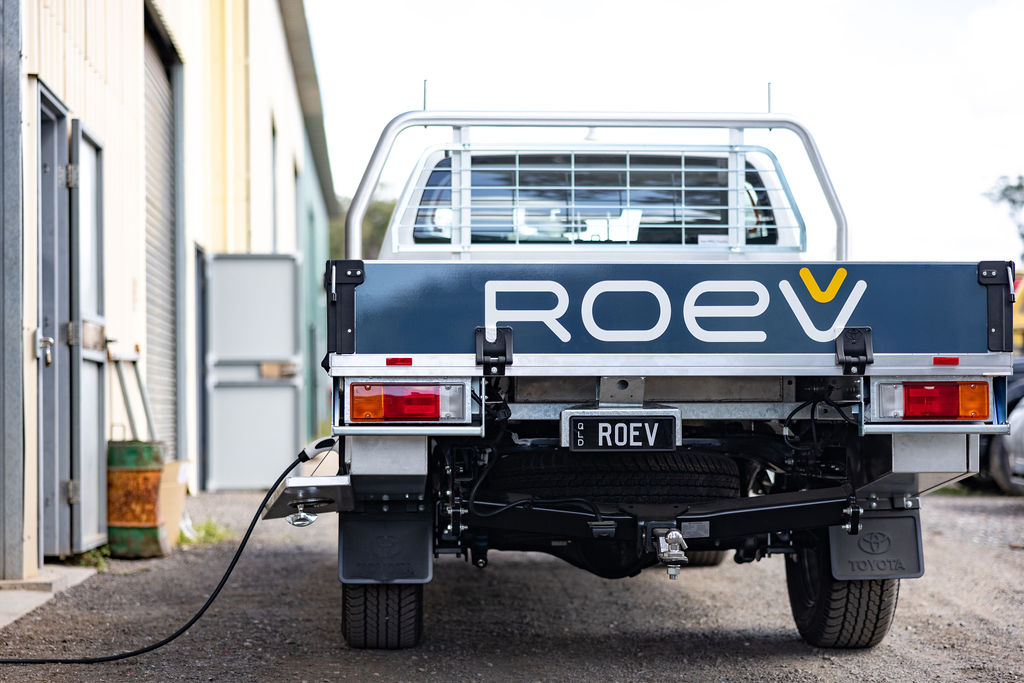
Roev to be more than just an EV
All electric utes from Roev – those converted existing utes and the ground-up longer term newcomer – are planned to do a lot more work than most EVs.
The company plans to make vehicle-to-grid (V2G) a key part of the sales pitch.
“EV utes are a great start, but the biggest impact will come from running them efficiently with renewable energy and the ability to store and redistribute that energy from their batteries,” says Wasmer.
The Nissan Leaf is the only EV currently on sale that can be used as a mobile electricity storage device to power a house or send electricity back to the grid.
But the tech is set to spread to other EVs in future, potentially allowing electric cars to store excess renewable (mostly solar) energy and even smooth the loads on the grid at different times during the day.
Chief technology officer and co-founder Paul Slade said Australia is on target to use EVs to provide battery capacity to 75 percent of Australian homes by 2035.
“We can power this country with renewable energy stored in EVs,” says Slade, adding that software was key to maximising the energy storage benefits.
“We see the future of vehicle depots as DC (direct current) micro-grids, and by testing our V2G technology and EV management software, we can show that it can be done without impacting the driving performance or range requirements for electric vehicles”.

